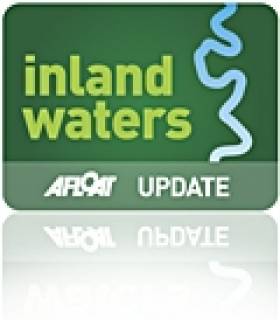Displaying items by tag: Gortmore Bell
Gortmore Bell Race On Lough Derg Won By Sadler 32 'An Seabhac'
The Iniscealtra Sailing Club annual Gortmore Bell race from Mountshannon on Lough Derg took place on Saturday 7th September. The wind was 10 to 15 knots from the South generally all day moving South West later in the race, which gave the fleet of 22 boats a long downwind leg to the Gortmore Mark at the Northern end of the lake and a long upwind leg home.
Class 2 set off 30 minutes ahead of class 1 and after racing for just under 5 and a half hours, the line honours was taken by the class 2 Kelt 29 'Celtic Charisma' only 12 seconds ahead of the class 1 SB20 'Deakin Marine'.
In class 1, Dan O'Donnell's Hanse 'Dash' took the win from the Dufour 36 'Passe Partout' with the J24 'Luder' taking third place.
Class 2 saw a great battle between a number of boats reeling back the years and sailing very well in the conditions. The Jeanneau Arcadia 'Reflex' took third place behind the Westerly Longbow 'Serendipity' but sailing very consistently across the day gave Jonathan Ryan and crew on the Sadler 32 'An Seabhac' the class 2 and overall win in the 2018 race.
Iniscealtra's Hanse 34 Wins Lough Derg's Long Distance Gortmore Bell Prize
#loughderg – Iniscealtra Sailing Club and Garykennedy Sailing Club hosted the annual 24–mile long Gortmore Bell Race on Lough Derg at the weekend, 36 sailing boats ranging from one design types such as 1720s and J24s plus a good mix of 28ft to 34ft cruiser–racers competed. Conditions for the Lough's long distance race were ideal with wind speeds ranging from eight and 14 knots from the north–east.
The course for the 2014 race was from a start Line in Mountshannon Bay to the Gortmore Green Navigation Mark rounded to Port, thence to Coose Bay Red Navigation Mark to port, Mountaineer Green Navigation Mark to starboard and a finish in Mountshannon Bay.
The winning boat boat was the Hanse 34 sailing cruiser, Dash, skippered by Dan O'Donnell of Iniscealtra Sailing Club.
























